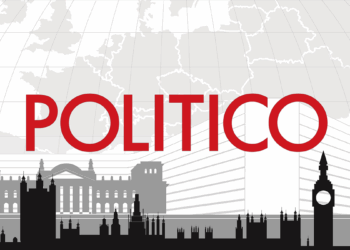Few leaders are as good at marketing themselves as India’s Narendra Modi. Since his election as Prime Minister in 2014, he has projected himself as the builder of a stronger and more assertive India, claimed credit for its robust economic growth, and has blamed his predecessors when things went wrong. A generation of voters believe India’s growing stature on the world stage is because of him.
But then comes Donald Trump, the disruptor par excellence, who on Wednesday threatened staggering 50% tariffs on imports from the world’s fourth largest economy. India now faces among the steepest U.S. levies of any nation.
The announcement is a remarkable development considering the past bonhomie between the two men. Modi and Trump are populists with ideological similarities and had previously campaigned for each other. And this year, Modi became one of the first world leaders to visit the White House following Trump’s return to office in January. He called him a “great friend” during the February visit and the two pledged to double U.S.-India trade to $500 billion by 2030.
But trouble boiled over in late July, when Trump announced a 25% tariff on Indian goods, which he doubled on Wednesday. The U.S. President has zeroed in on India’s significant purchase of Russian oil as a deadline for Moscow to agree to a cease-fire in Ukraine looms.
Read More: Modi’s Unraveling Has Begun
The new tariffs—which come into force on Aug. 27—won’t necessarily protect U.S. markets or businesses. But they will punish a country that currently imports 36% of its oil from Russia, up from a mere 0.2% before the Kremlin’s full-scale invasion of Ukraine over three years ago. Much of this bargain oil is used for domestic consumption—India imports more than 80% of the oil it needs, and quickly finding another supplier will be neither easy nor cheap.
That may be one reason the Indian government has shot back at the tariffs, calling them “unfair, unjustified, and unreasonable.” But another may be a sense that Western nations are being hypocritical. New Delhi has been quick to point out that the E.U. continues to do considerable business with Russia, and that Washington had previously supported India’s purchase of Russian oil to help stabilize global energy prices.
Local refiners are now awaiting word from New Delhi on whether to continue buying Russian oil, sources told Reuters, while India’s national security adviser is in Moscow, where he said Putin will visit India later this year. Top Modi aides are expected to visit Russia in the coming days.
But however the Modi government chooses to respond, one thing is clear. The “friendship” Modi thought he had with Trump was ultimately a dysfunctional dalliance—defined by Modi’s effusiveness and Trump’s ruthless self-interest. The bromance is over. Personal chemistry cannot override the cold math of global interests.
Even leaving aside the matter of Russian oil, the U.S. and India have been diverging on trade, tariffs, and geopolitics. Trump wants to bring back manufacturing jobs to the U.S.; Modi’s “Make in India” campaign is in part a pitch to American firms to relocate from China to India. Modi’s approach is simply incompatible with Trump’s “America First” policies. India is also profoundly miffed about Trump’s sudden, tactical tilt toward Pakistan. In June, he hosted the Pakistani army chief at the White House, and has recently announced an oil exploration deal with Pakistan. He also annoyed India no end by claiming credit for bringing about a ceasefire between India and Pakistan after a four-day conflict in May. None of this is pleasing to a country that has fought bitter wars with Pakistan, and whose officials have over the past two decades assiduously invested to elevate Indo-U.S. relations to a higher plane. Trump’s moves have shaken those foundations.
Read More: How Modi’s Economy Has Really Fared Under Modi
His words have also shocked the Indian establishment. Trump went so far as to label India’s economy “dead” last week and accuse Modi of “profiting from chaos,” effectively turning a symbol of friendship into a lever for public shaming and coercion. Indian diplomats are used to quiet, behind-the-scenes diplomacy.
After staying silent for some days, Modi on Thursday appeared to address the tariffs when he said that he would not compromise on the interests of Indian farmers. But he has a tough balancing act ahead. If he concedes on any point, he risks reputational damage at home. But if he attempts to take on America, he risks further escalation that can harm an inconsistent economy that is now intertwined with America more than ever before. The U.S. is India’s biggest trade partner and much of the country’s $86 billion in goods exports to America will not be viable if the tariffs come into force as expected in 20 days. Trump’s tariff announcements are often arbitrary, and he routinely revises rates, sometimes backing off, but sometimes turning more aggressive.
There are also domestic political risks for Modi. The opposition has seized on the moment, and upped the ante by calling the tariffs “economic blackmail” and an attempt to “bully India into an unfair trade deal” as negotiations continue.
The lesson for India is that hard interests, not warm hugs, drive policy. For Trump, no relationship seems sacred—only the art of the deal matters. Modi may have thought he could charm Trump; Trump was glad to be praised, but ultimately that is not enough.
For the longest time, Indian foreign policy rested on the principle of strategic autonomy. But exercising such autonomy has costs, as we are seeing this week. The tariffs are a reminder to India that while its influence and economy have grown, its strategic relevance hasn’t yet risen to a point where it can just have its way. Its foreign policy remains too independent for the West’s liking, its markets still closed for many Western products, its bureaucratic procedures still cumbersome for foreign businesses, and its industries vulnerable to outside forces.
The post How Modi Misread Trump appeared first on TIME.




